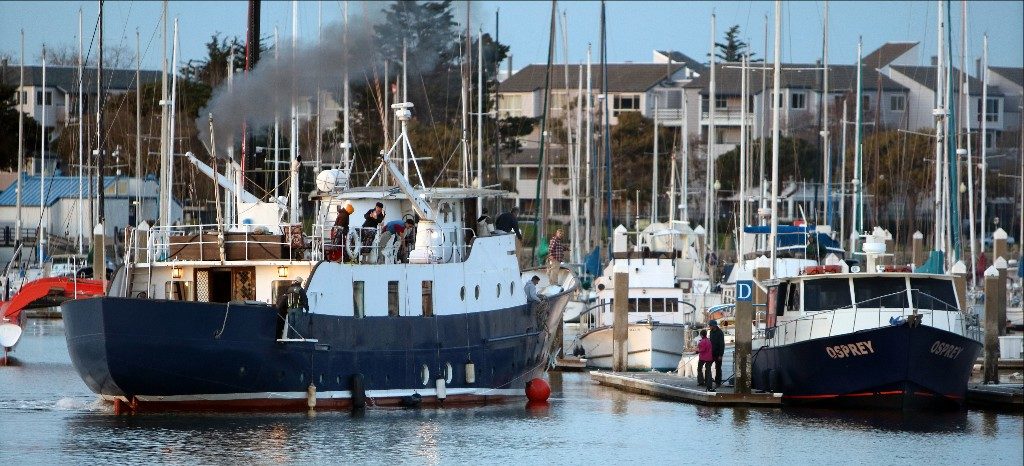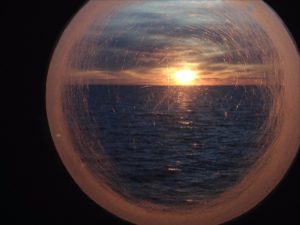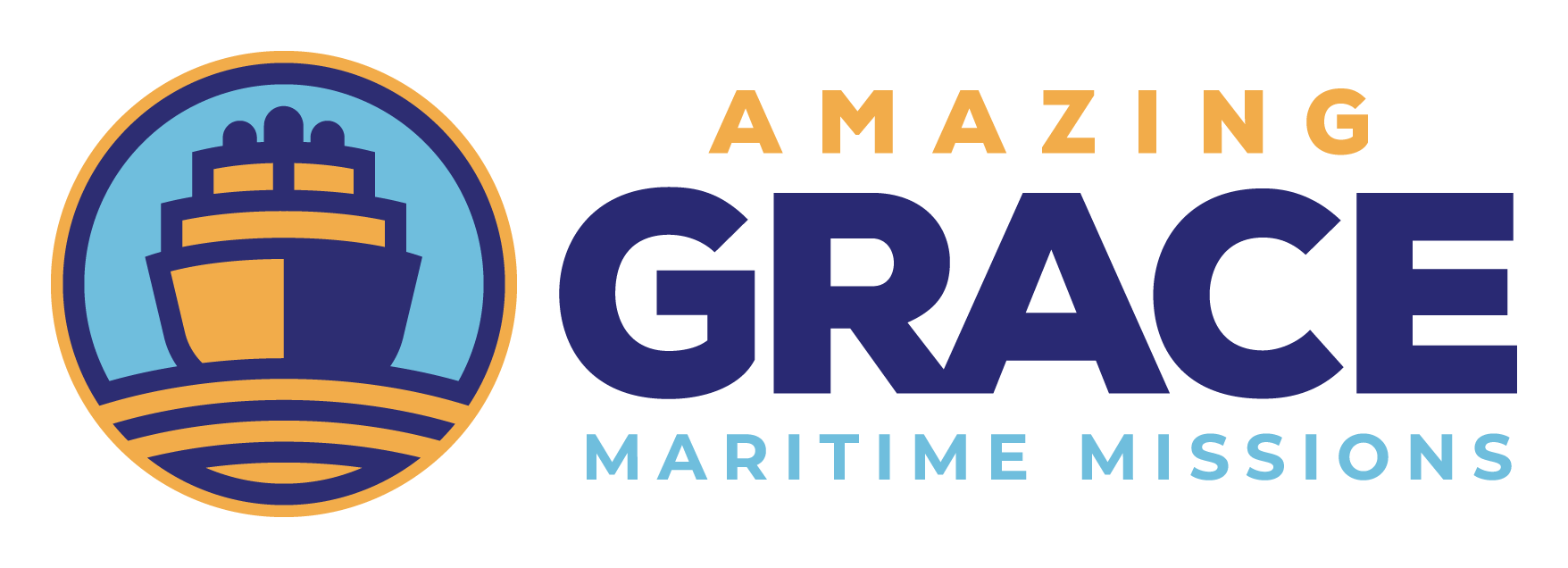Tales of Our Journey to Ensenada and Cabo San Lucas, Mexico
On Sunday morning, January 29, 2017, m/v Amazing Grace departed Bethel Island for the last time to cruise to Marina Bay Marina in Richmond for the Bon Voyage party that was well attended by our relatives, close friends and church family. Many thanks to those who made the extra effort to come! We greatly appreciated it! The next morning, Monday, 1/30/17, we practiced our fire drill and man over board procedures then we casted off!!!

Arriving in Marina Bay Marina, Richmond CA on January 29, 2017
Our voyage began with clear skies and calm seas as we wave goodbye to our friends, the Gilbertsons and the Zychs, seeing us off at Fort Point as we cleared the Golden Gate Bridge. Heading south, a squadron of Army Apache helicopters flew across our bow. Per Capt. Ed Payne’s report, a winter storm forming off the Pacific Northwest, expected to arrive in the Bay Area around Wednesday, generated following seas and significant tail winds that pushed us along at over 8 knots, with a maximum speed of 12 knots. Passing Monterey Bay the first evening, Pismo Beach the second evening, Catalina Island and Newport Beach the third evening, reaching Ensenada, Mexico by the fourth evening.
![]()
The crew quickly settled into a routine of 4 hours on watch and 8 hours off. As we approached Ensenada, we noticed that the starboard engine was consuming 3 times more oil than usual. So, we contacted our “Designated Person Ashore” aka DPA, Ikaika Hobbs, Director of YWAMShips Mazatlan via our “inReach Explorer” satellite device, to assist us with finding a marina and purchasing more oil in Ensenada. Within a couple of hours, he had secured a berth and arranged a driver from a commercial oil company to meet us when we arrived the next day, Thursday 2/2/17. We had a wonderful evening in town. Ensenada is a “Port of Entry”, probably the easiest place for yatistas to arrive and depart Mexico. On Friday morning, 2/3/17, we went to the Centro Integral de Servicios to obtain our Mexican tourist visas, good for 6 months and paid for the Temporary Import Permit for the ship, good for 10 years, in one easy visit. There were 3 governmental agencies that we needed to clear. What took 2 hours in Ensenada would have taken several days in Mazatlán because Ensenada is more prepared to handle the high volume of yatistas from the US. Later that afternoon, we casted off and departed for Mazatlán.


The storm that arrived in Northern California the previous day had sent 4 to 5 foot swells down the coast which caught up with us, as we exited Ensenada. As we powered through the swells, the ship rocked up and down causing the fuel tanks to slosh around which stirred up the algae that grew in the day tank for the past decade. The algae began to clog up the Racor fuel filters. By design, the fuel filters are hot swappable, meaning, we can switch fuel filters while underway without disrupting the fuel flow to the engines. The fuel contaminates were so bad that we had to switch and clean the fuel filters every 30 minutes. Gerry and I were very busy during this time. Three hours had passed since we departed Ensenada when a huge swell rocked the ship and both engines shutdown at the same time. Around 5:45pm, we were dead in the water as the waves continued to hit. Capt. Ed, Noah and Chatelier just began their watch when the engine stopped. Gerry and I were sitting on the couch in the main salon as we watched the window fill with sky then water then quietness except for the generator. We quickly walked to the engine room to assess the situation. We discovered that both engines were starved of fuel and the generator began to sputter. I began to clean out the clogged fuel filters when I realized that the Racor canisters did not have fuel in it from the last time I cleaned out the bowl. So, I quickly switch to the other working filter sending fuel to the generator to continue working. Next, we attempted to start the engines. After several attempts, they wouldn’t start. I became concerned that we might drain the batteries so we stopped and reassessed the situation. Brian came down to the engine room to help Gerry bleed the air out of the fuel lines and tried restarting the engines but no luck. After looking the system over again, Brian discovered a third bleed valve in the fuel injector pump module. Once the air was release from the fuel lines, the engines fired up!

Calm Seas

Racor Fuel Filters
When the engines quit, we had no directional control and the winds blew the ship’s bow away from the oncoming waves causing the stern of the ship to face into the waves. Miraculously, this made the ride more stable and we were able to work in the engine room more comfortably. Thirty minutes into the problem, Capt. Ed contacted the US Coast Guard San Diego Sector notifying them of our situation and to standby for assistance. Drifting for an hour towards the rocks, it became apparent that help would be required to avoid them. Thankfully, the engines came back online, we resumed our course and we had several days of dependable propulsion. After a couple of days, I found the sources of the oil leaks and rectified the situation. Our journey south to Cabo San Lucas continued without incident, passing Punta Santa Rosalia by Saturday evening 2/4/17, passing Bahía De Ballenas by Sunday evening, passing Isla Santa Margarita by Monday evening, then passing Cabo San Lucas by Tuesday evening 2/7/17. Read our next blog for the rest of our story to Mazatlan, Mexico.
